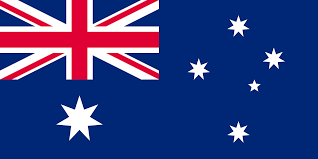Defence is a major supporter of the Australian industry. It is indicative that defence acquisitions and equipment maintenance and support activities, provide work for over 28,000 Australians. In 2015, the top 40 Australian defence contractors achieved an estimated turnover of 9.24 billion AUD.
Many major Primes/OEMs from the Aerospace & Defence Industry worldwide, have established local subsidiaries in Australia to carry-out related business. Specifically, among the top Australian defence contractors are: BAE Systems Australia, ASC (Australian Submarine Corporation) Pty, Thales Australia, Raytheon Australia, Airbus Group Australia Pacific, Lockheed Martin Australia, Boeing Defence Australia, DCNS Australia and Broadspectrum (formerly Transfield Services).
The country’s defence industry capabilities span to cover the needs of all three branches of the Armed Forces, as well as Communications, Logistics, C2 (Command & Control), Intelligence and Training aspects, as follows:
- Aerospace: Australia’s aerospace industry is already a competitive supplier to the world’s markets and is a participant in the multi-national Joint Strike Fighter program. The industry exhibits strong competences in aircraft maintenance and life extension services and has strong capabilities in system and software design, engineering, component design, manufacturing and servicing, air systems integration, airport equipment and services, air traffic management and aircrew training, for both civil and defence applications.
- Land: Australian defence companies design, manufacture and support specialist military vehicles (such as the Overlander vehicle project, otherwise known as the Land 121 programme) that offer capabilities such as ballistic protection, rugged suspension, troop comfort, long-range endurance and the ability to operate in hot, dry and dusty conditions. Moreover, Australian defence companies have adapted overseas designs of armoured fighting vehicles such as the M113 and MOWAG Piranha 8x8 (to the Australian Light Armoured Vehicle (ASLAV)) and have designed and manufactured a range of specialist military equipment, munitions and small arms.
- Maritime: Australia’s maritime industry is internationally competitive and has a long-standing track record in the construction, integration, modification and support of naval vessels and their sub-systems. Australia has built and operates advanced conventional submarines (the Collins class built locally by ASC Pty), the ANZAC Frigates and HUON Minehunters, while it is currently constructing 3 air warfare destroyers (Hobart class) and will further participate to the building of support ships (auxiliary oiler and replenishment (AOR) vessels) for the Australian Navy. Australia’s naval capabilities include: ship construction, modular fabrication, systems integration, platform integration, sub-system design and maintenance services, patrol boat design and construction and high-speed naval vessel design and construction.
In addition, the Australian defence industry delivers radars and surveillance equipment, including unmanned aerial vehicles, phased array radars, electro-optic systems and underwater sensors, logistic support, as well as develops complex command and control systems. In the field of training, Australian companies provide specialist training in navigation and seamanship, systems engineering and integration, officer and pilot training and aircraft maintenance.
The country’s defence industry plays a critical role in assisting the Capability Acquisition and Sustainment Group (CASG), an agency part of the Australian Department of Defence, responsible for purchasing and maintaining military equipment and supplies, in the quantities and to the service levels that are required by the Australian Defence Force (ADF) and as approved by the national government.
Despite the efforts of the CASG and its predecessor the DMO (Defence Materiel Organisation), to aid the local defence industry, the trend in acquisitions completed by the DMO over the period from July 2007 to June 2014, illustrated that a decreasing amount of DMO contracts (by value) were being awarded to companies originating from Australia and a correspondingly increased number of contracts were being placed with offshore entities, particularly directly through the US Government, as illustrated in the following figure.
In response to the above and given the large amounts to be invested in the ADF modernisation in the years to come, the Australian Government’s 2016 Defence White Paper signifies on the one hand a long-term investment in modern war-fighting equipment and systems, research and development, infrastructure, while on the other the intention to assist the local industry in developing associated advanced capabilities. To empower this Defence and Industry partnership, a number of related measures have been set out, aiming to facilitate the Government’s capability plans and to “reset and refocus the Defence and industry partnership”, according to the Government’s 2016 Defence Industry Policy Statement.
In this context, envisioning a strong and internationally competitive local defence industry, the Australian Government is planning to ameliorate the industry’s role in Capability Realisation, through new mechanisms and initiatives, such as the Centre for Defence Industry Capability (CDIC), the Defence Innovation Hub and the Next Generation Technologies Fund.
In order to amplify the associated effects and to help local companies to maximise their potential, Australian authorities had launched initiatives such as the Skilling Australia’s Defence Industry (SADI) programme. SADI was established in 2005 and during the period up to 2016, approximately 200 defence suppliers had received funding for training or skilling activities, in trade, technical and professional skill sets. In 2015/16 the SADI programme provided funding of up to $5.639 million AUD, to assist the defence industry in providing the Australian Defence Force with the capabilities needed to defend Australia and its national interests.
Furthermore, Australia is one of the nine original partner countries of the F-35 Lightning II Joint Strike Fighter, and has committed to acquire at least 72 F-35A aircraft. Australia’s participation in the associated development and procurement program, had generated US$554.5 million worth of contracts until December of 2015 for the Australian Defence Industry, while JSF industry support programs have provided over 8 million AUD in support of the Australian industry and research organisations involved in the JSF Program. By 2022-23, it is expected that Australian industry participation in the programme will have grown to more than US$2 billion. An indicative visualization of the involvement of the Australian defence industry in the JSF programme, is provided in the following figure.

Source: Australian Government, Department of Defence “2016 Defence Industry Policy Statement"

